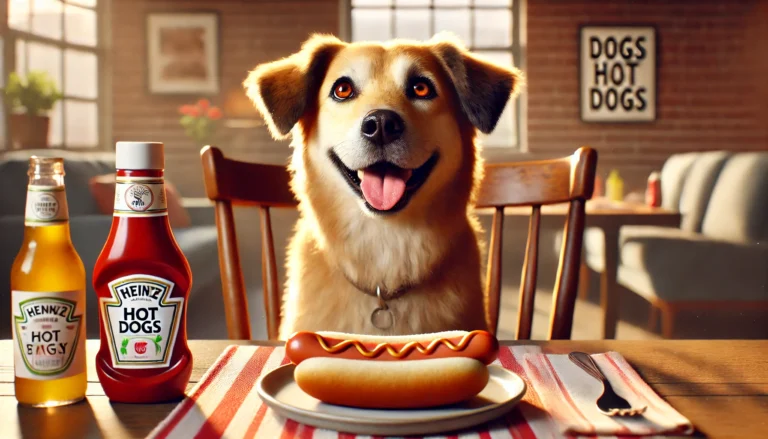10 Symptoms of Diabetes in Dogs

Diabetes in dogs is a chronic condition that occurs when the body either doesn’t produce enough insulin or can’t use it effectively. Insulin is necessary to regulate blood sugar levels. Like humans, dogs can develop diabetes, and it is often a serious condition that requires proper management and attention. Recognizing the early signs is key to managing diabetes in dogs and preventing complications.
Understanding Diabetes in Dogs
Diabetes in dogs, also known as Canine Diabetes Mellitus, is a disorder of the pancreas where there is either insufficient insulin production or an inability to properly use insulin. This leads to high blood sugar (hyperglycemia), which can cause various health issues.
Types of Diabetes in Dogs
There are two primary types of diabetes in dogs:
- Type 1 Diabetes (Insulin-Dependent): This is the most common type of diabetes in dogs, where the pancreas produces little to no insulin.
- Type 2 Diabetes (Non-Insulin Dependent): This is rare in dogs, but it occurs when the body doesn’t respond properly to insulin, leading to high blood sugar.
Although Type 1 diabetes is the most common form in dogs, it can be managed with insulin injections, proper diet, and regular monitoring.
10 Symptoms of Diabetes in Dogs
Recognizing the symptoms of diabetes in dogs early can help you manage the condition more effectively. If left untreated, diabetes can lead to severe complications, such as kidney failure, cataracts, and nerve damage. Below are the 10 symptoms of diabetes in dogs.
1. Increased Thirst (Polydipsia)
One of the most noticeable early signs of diabetes in dogs is excessive thirst. This symptom is known as polydipsia.
Why Does This Happen?
When a dog has high blood sugar, their kidneys work overtime to filter out excess sugar from the bloodstream. This leads to frequent urination, which causes dehydration. As a result, the dog drinks more water to compensate for the fluid loss.
What To Do:
If you notice your dog drinking significantly more water than usual, it’s important to consult your vet. Keeping track of your dog’s water intake can help your vet diagnose the condition early.
2. Frequent Urination (Polyuria)
Along with excessive thirst, frequent urination, or polyuria, is another common symptom of diabetes in dogs.
Why Does This Happen?
High blood sugar levels overwhelm the kidneys, causing them to excrete the excess sugar into the urine. This leads to more frequent trips outside and larger amounts of urine being produced.
What To Do:
Keep an eye on your dog’s bathroom habits. If your dog is urinating more often than usual, especially at night, it may indicate diabetes. A vet test for blood sugar levels is crucial.

3. Weight Loss Despite Normal or Increased Appetite
Another symptom of diabetes in dogs is unexplained weight loss, even if the dog is eating normally or even eating more than usual.
Why Does This Happen?
In diabetes, the body cannot use glucose (sugar) from food effectively because of the lack of insulin or the body’s inability to use it. This causes the body to break down muscle and fat for energy instead, leading to weight loss.
What To Do:
Monitor your dog’s weight and eating habits closely. If your dog is losing weight despite a healthy appetite, this is a red flag. A vet visit and blood test will help confirm the diagnosis.
4. Increased Hunger (Polyphagia)
Polyphagia, or increased hunger, is another common symptom of diabetes in dogs. Even though the dog may be eating more than usual, they often don’t seem satisfied.
Why Does This Happen?
When insulin is not working properly, glucose cannot enter the cells to provide energy. The dog’s body then sends hunger signals to the brain, causing them to eat more in an attempt to get the energy they need.
What To Do:
If your dog is eating more than usual but still losing weight or showing signs of fatigue, consult a vet. They may perform a blood test to determine the cause of the increased hunger.
5. Lethargy and Weakness
If your dog is showing signs of lethargy or seems unusually tired, this could be a sign of diabetes. Dogs with uncontrolled diabetes often lack energy and seem weak or disinterested in activities they once enjoyed.
Why Does This Happen?
The inability of cells to get enough glucose for energy causes a lack of energy and overall fatigue. In addition, the weight loss and dehydration from frequent urination can also contribute to weakness.
What To Do:
Ensure your dog is getting enough rest and comfort. If lethargy persists, take your dog to the vet for blood sugar testing. They may need insulin therapy or a change in diet.
6. Cloudy Eyes and Cataracts
Cloudy eyes or cataracts are common symptoms of diabetes in dogs, especially in older dogs.
Why Does This Happen?
High blood sugar levels can cause changes in the lens of the eye, leading to cataract formation. If your dog’s eyes appear cloudy, it’s an indication of the long-term effects of high glucose in the bloodstream.
What To Do:
A vet will conduct an eye exam and may refer you to a specialist if cataracts are suspected. Cataracts can often be treated with surgery if caught early enough.
7. Poor Coat Condition
A dog with diabetes may have a dull, dry coat or even suffer from hair loss.
Why Does This Happen?
High blood sugar can affect the skin and coat, leading to dryness and an increase in shedding. The body’s ability to maintain healthy skin and fur becomes compromised due to poor circulation and dehydration.
What To Do:
Ensure your dog is on a proper diet that supports skin health. Regular brushing and bathing with dog-friendly products can help, but always consult with your vet to address the root cause, which could be diabetes.
do you know
Dogs Eat Figs are a highly nutritious fruit that offer a range of health benefits for both humans and potentially for dogs, when given in moderation.
8. Vomiting and Diarrhea
While not as common, vomiting and diarrhea are possible symptoms of diabetes in dogs, particularly when the blood sugar levels are very high.
Why Does This Happen?
High blood sugar can upset the digestive system, causing gastrointestinal issues like vomiting and diarrhea. In some cases, diabetes may lead to a condition called diabetic ketoacidosis, which can cause severe vomiting, lethargy, and dehydration.
What To Do:
If your dog is vomiting or has diarrhea, particularly if it’s coupled with other symptoms of diabetes, immediate veterinary attention is necessary.
9. Recurrent Infections
Dogs with diabetes are more prone to infections, particularly urinary tract infections (UTIs) and skin infections. Frequent infections may be a sign that the dog’s immune system is compromised due to the condition.
Why Does This Happen?
High blood sugar levels weaken the immune system’s ability to fight infections. In addition, the excessive sugar in urine creates an environment where bacteria thrive, increasing the risk of UTIs.
What To Do:
If your dog suffers from frequent infections, it’s essential to get their blood sugar levels checked. Treating the underlying diabetes with insulin therapy and a proper diet can help reduce the risk of infections.
10. Panting
Excessive panting can also be a sign of diabetes in dogs. It may be especially noticeable when the dog is resting or not physically exerting themselves.
Why Does This Happen?
Panting is often a response to discomfort, dehydration, or stress. In diabetic dogs, dehydration caused by frequent urination and the inability to regulate blood sugar levels can lead to persistent panting.
What To Do:
If your dog is panting more than usual, check for signs of other symptoms like excessive thirst or frequent urination. If these are present, schedule a visit to the vet to check for diabetes.
Conclusion
Recognizing the 10 symptoms of diabetes in dogs early is key to managing the condition and preventing complications. Regular vet check-ups, a balanced diet, insulin therapy, and proper hydration can help your dog live a long and healthy life despite a diabetes diagnosis. If you notice any of these symptoms in your dog, consult your veterinarian immediately for a blood test and treatment options. With early intervention, many dogs with diabetes lead normal, happy lives.
What are the first signs of diabetes in dogs?
The first signs of diabetes in dogs often include increased thirst, frequent urination, and weight loss despite a normal or increased appetite. You may also notice your dog being more lethargic than usual, exhibiting weakness, or having a poor coat condition. These early symptoms occur because the body cannot properly use the glucose from food, leading to high blood sugar levels. If your dog exhibits these symptoms, it’s crucial to consult a veterinarian for a proper diagnosis and blood tests. Catching diabetes in dogs early can lead to better management and a higher quality of life for your pet.
How can I check my dog for diabetes at home?
While you can’t definitively diagnose diabetes in dogs at home, there are a few signs to look out for. Check for symptoms like increased thirst, frequent urination, and unexplained weight loss. If you observe these, it’s advisable to monitor your dog’s water intake and bathroom habits more closely. For a more accurate test, you would need a urine or blood test, which your veterinarian can perform. Some pet owners use home urine test strips to check for glucose in their dog’s urine, but these tests are not a substitute for a veterinary diagnosis. Early detection of diabetes in dogs is key to managing the condition.
How does a dog act when blood sugar is high?
When blood sugar is high, dogs with diabetes in dogs may show signs of excessive thirst and urination. They might appear lethargic or weak, and their appetite may increase, yet they may still lose weight. In more severe cases, high blood sugar can lead to diabetic ketoacidosis (DKA), where the dog may become disoriented, have trouble walking, and exhibit vomiting or rapid breathing. If you notice these symptoms, immediate veterinary attention is necessary, as uncontrolled high blood sugar can lead to life-threatening complications. Keeping your dog’s blood sugar levels within the recommended range through insulin and a balanced diet is crucial for managing diabetes in dogs.
How do I know if my diabetic dog is suffering?
Signs that a dog with diabetes in dogs is suffering may include a noticeable change in behavior such as more frequent urination, lack of energy, or disinterest in food or activities. If your dog is having difficulty walking, is disoriented, or is panting excessively, these could be signs that their blood sugar levels are either too high or too low. Severe symptoms, like vomiting, loss of appetite, or unusual breathing, indicate that the condition is not well controlled and may require immediate veterinary intervention. Monitoring your diabetic dog’s overall health and ensuring proper treatment is vital in keeping them comfortable and healthy.
How to lower dog blood sugar quickly?
If you notice signs of high blood sugar in your dog, such as excessive thirst or urination, it is essential to contact your veterinarian immediately. To lower blood sugar quickly in diabetic dogs, insulin therapy is often required, as prescribed by your vet. Your veterinarian will determine the appropriate insulin dose based on your dog’s weight, age, and blood sugar levels. Avoid attempting to lower your dog’s blood sugar without veterinary guidance, as insulin overdose or incorrect management can lead to dangerous hypoglycemia (low blood sugar). A well-balanced diet, regular insulin injections, and routine vet check-ups are the best ways to keep your dog’s blood sugar levels stable over time.
What not to feed a diabetic dog?
When managing diabetes in dogs, it is important to avoid foods high in sugar, simple carbohydrates, and high-fat content. Avoid feeding your dog table scraps, sugary treats, or foods with fillers like corn and soy, as these can cause blood sugar spikes. Stick to a consistent, balanced diet recommended by your veterinarian, often one that is high in fiber and low in simple sugars. Additionally, certain human foods, such as grapes, raisins, and chocolate, can be toxic to dogs and should be completely avoided. Always consult your vet before introducing new foods to ensure they are safe and beneficial for managing your dog’s diabetes in dogs.






